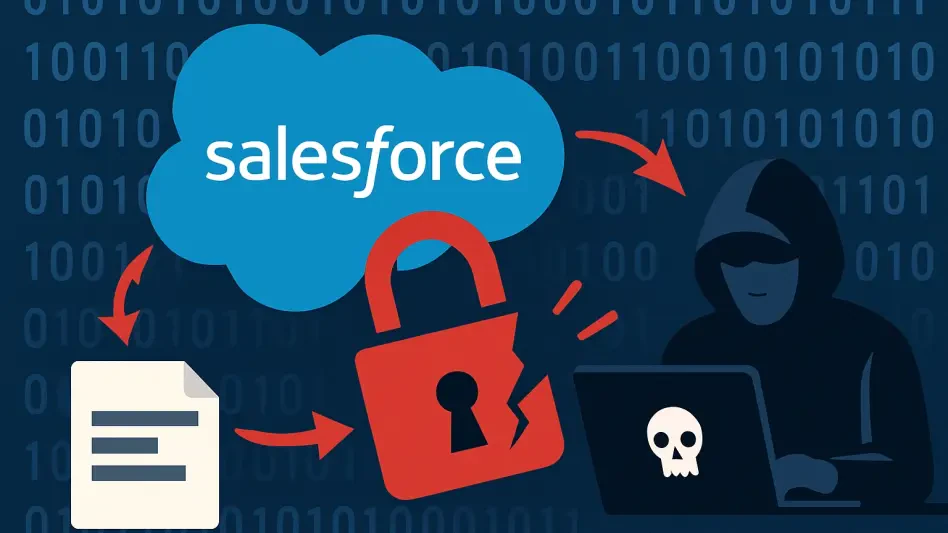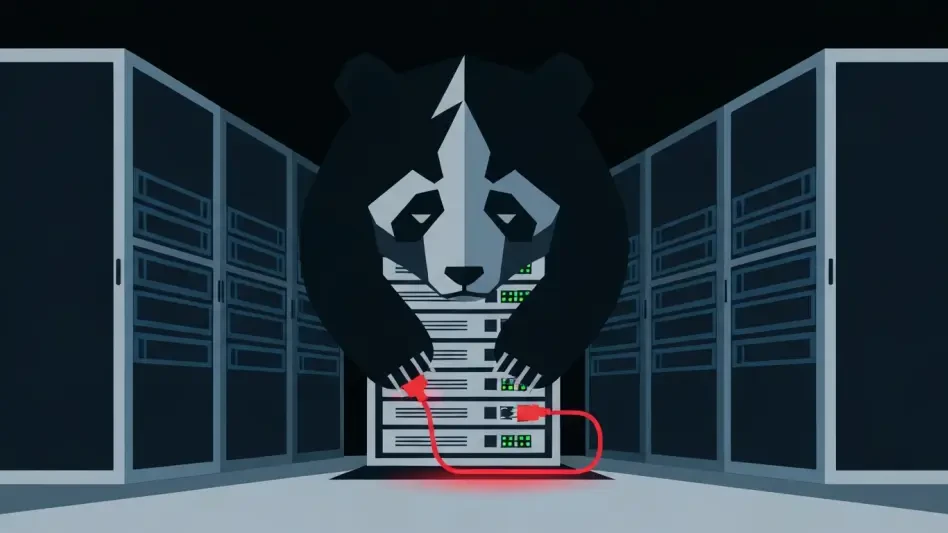In an era where digital ecosystems are deeply interconnected, a recent cybersecurity incident involving Salesforce, a titan in customer relationship management software, has raised critical alarms about the vulnerabilities introduced through third-party integrations. Late on a Wednesday, Salesforce issued a security advisory revealing unauthorized activity in applications connected to its environments via Gainsight, a vendor offering customer success software. This breach, impacting hundreds of Salesforce customers, underscores a growing threat landscape where external vendors can become conduits for cybercriminals. As businesses increasingly rely on such integrations to enhance functionality, the incident serves as a stark reminder of the cascading risks embedded in these partnerships. The urgency to address these vulnerabilities cannot be overstated, as the breach not only jeopardizes sensitive data but also erodes trust in platforms that form the backbone of enterprise operations.
Unpacking the Gainsight Incident
The scope of the recent breach involving Gainsight is both alarming and revealing, with over 200 Salesforce instances potentially compromised due to suspicious activity in the vendor’s connector applications. According to insights from Austin Larsen, a principal analyst at Google Threat Intelligence Group, this incident mirrors a similar attack just months earlier, suggesting a persistent threat targeting Salesforce ecosystems through third-party channels. Salesforce swiftly responded by revoking access tokens that facilitated these connections, emphasizing that the vulnerability originated outside their core platform. However, the recurring nature of such incidents points to a systemic issue in how external apps interact with major systems. The breach’s impact extends beyond immediate data exposure, raising questions about the adequacy of current security protocols for third-party integrations. As enterprises grapple with the fallout, the incident highlights the urgent need for more robust mechanisms to monitor and secure these connections against sophisticated cyber threats.
Further examination of the Gainsight breach reveals a troubling pattern of exploitation by a suspected threat group, identified as ShinyHunters or UNC6240, believed to be behind multiple attacks on Salesforce integrations. This group’s tactics demonstrate a deep understanding of the interconnected nature of digital ecosystems, exploiting access points that are often overlooked in standard security assessments. While Gainsight has initiated an internal investigation to uncover how access tokens were compromised, specifics remain undisclosed, leaving affected organizations in a state of uncertainty. Salesforce, meanwhile, has committed to providing updates through its security page, signaling a push for transparency amid ongoing mitigation efforts. The broader implication here is the vulnerability of even well-established vendors to sophisticated attacks, which can ripple through to impact hundreds of downstream customers. This scenario necessitates a reevaluation of trust assumptions in third-party relationships and a stronger emphasis on preemptive security measures.
The Broader Risks of Third-Party Integrations
The recurring theme of third-party breaches, as evidenced by both the Gainsight incident and an earlier attack involving Salesloft Drift that affected over 700 customers, points to a critical weak link in enterprise security frameworks. These incidents illustrate how cybercriminals can leverage external vendors as entry points to access sensitive data within larger platforms like Salesforce. The cybersecurity community increasingly recognizes that supply chain risks are not merely theoretical but represent tangible threats capable of causing widespread disruption. In the case of Gainsight, its temporary removal from the HubSpot Marketplace as a precautionary measure—despite no reported suspicious activity there—underscores the potential for breaches to affect interconnected services beyond the initial target. This interconnectedness amplifies the stakes, as a single compromised vendor can serve as a gateway to multiple ecosystems, exposing vast networks of data to unauthorized access.
Delving deeper into the systemic challenges, the reliance on third-party integrations for enhanced functionality often comes at the cost of heightened exposure to cyber risks. The earlier Salesloft Drift breach, traced to a threat group accessing a GitHub account months before significant data theft occurred over a 10-day period, reveals how long undetected vulnerabilities can fester in external systems. Salesforce’s assertion that its platform remains secure, with issues stemming from third-party apps, does little to assuage concerns when the end result is still compromised customer data. Expert analysis suggests that without stringent oversight and standardized security practices for vendors, such breaches will continue to recur. The challenge lies in balancing the operational benefits of third-party tools with the imperative to safeguard against exploitation, a task that demands collaborative efforts across industries to establish and enforce rigorous security benchmarks for all connected entities.
Strengthening Defenses Against Future Threats
Reflecting on the incidents that unfolded, it became evident that the cybersecurity landscape has been repeatedly tested by the ingenuity of threat actors exploiting third-party connections. The breaches involving Gainsight and Salesloft Drift served as pivotal moments, exposing the fragility of trust in interconnected digital systems. Organizations affected by these events had to confront the immediate consequences of data exposure while grappling with the broader implications for their security posture. The coordinated response from Salesforce, including the revocation of access tokens and public advisories, marked a critical step in damage control, though the root causes of token compromise remained elusive in ongoing investigations. These events underscored a harsh reality: even robust platforms cannot shield against vulnerabilities introduced by external partners without comprehensive safeguards in place.
Looking ahead, the path to resilience lies in proactive measures and a fundamental shift in how third-party relationships are managed. Enterprises must prioritize rigorous vetting processes for vendors, ensuring that security standards are not just met but continuously audited. Implementing advanced monitoring tools to detect unusual activity in real-time can serve as an early warning system against potential breaches. Additionally, fostering a culture of shared responsibility, where vendors and platforms collaborate on security protocols, could mitigate risks before they escalate. As the digital ecosystem continues to evolve, adopting a zero-trust approach—where no entity is inherently trusted—offers a pragmatic framework for safeguarding sensitive data. The lessons from these breaches should catalyze action, urging businesses to fortify their defenses and anticipate vulnerabilities in an increasingly complex threat environment.








